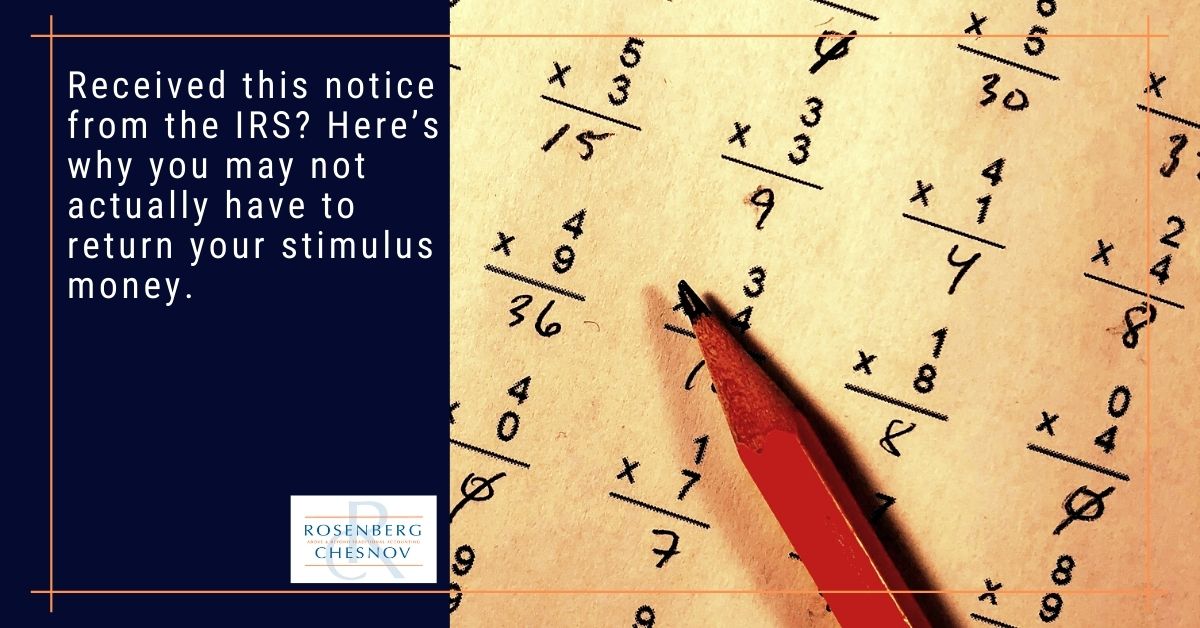What is a math-error notice?
Despite the name, arithmetic mistakes are only one part of “math error” authority. The IRS sends math-error notices due to various issues detected during returns processing, which require adjustment.
The IRS can make the necessary adjustments thanks to Section 6213 of the Internal Revenue Code. This section of the law provides an exception to normal restrictions on assessing a taxpayer’s return. The “math error” authority gives the IRS the power to quickly resolve simple mistakes on a tax return and assess additional tax.
Under this tax code section, the IRS can quickly assess and correct miscalculations, clerical errors, inconsistent entries, omissions of information, and deductions or credits that exceed limits.
The IRS then notifies the taxpayer of any corrections made to their return, which can result in an adjusted refund amount…or balance due.
There are two types of math-error notices the IRS will typically issue: the CP11 and CP12.
What are CP11 and CP12 notices?
If you receive either a CP11 or CP12 notice by mail, it means the IRS has corrected something on your tax return.
The CP11 applies when there is a miscalculation on your return, and you owe more money due to the correction.
The IRS issues a CP12, on the other hand, when one or more mistakes either cause you to be due a refund or cause your original refund amount to change.
If you agree with the information on your CP11, you must pay the amount owed by the date indicated or make payment arrangements if you cannot pay the total amount. If your CP12 is correct, you don’t have to do anything; your refund check will arrive in 4-6 weeks.
However, if you disagree with the notice, you must contact the IRS within 60 days to appeal the decision.
The right to appeal is the critical information that the IRS omitted from the notices received by many taxpayers this year. The omission led to a follow-up letter which, in some cases, only added to the confusion.
Why did you receive a math error notice about your stimulus?
The majority (more than 80%) of notices issued this year went to filers who claimed the Recovery Rebate Credit on their 2020 returns. The first two rounds of stimulus checks were advance payments on this credit. So most people who were eligible received their funds directly as an economic impact payment.
But some people who were eligible for stimulus did not receive their checks or got less than the full amount. They were able to claim their credit on their tax returns and receive their stimulus funds in this way.
The IRS has now notified many taxpayers that they weren’t eligible for the recovery rebate they claimed or that the rebate amount would be smaller after adjustment.
It is worth mentioning that there are certainly valid reasons why this may be the case. For example, the third stimulus check came with an income cutoff; if your income is higher and you still received a check, you will likely have to return some or all of it.
You may also have to return your payment if:
- You received a check for someone who has died (with some exceptions, such as in the case of joint filers where one spouse is still living)
- You don’t have a Social Security number.
- You are considered a “nonresident alien” without a US citizen spouse.
- You are a noncitizen who files federal taxes.
- You are claimed as a dependent on someone else’s taxes
- You received the same payment round twice.
Nevertheless, many taxpayers who have received these notices do not fall under any of these categories. WCVB, an ABC-affiliated television station based in Boston, reported on the case of Massachusetts woman Natalie Bonelli, who claimed a missing payment after her stimulus check went to the wrong address—only to receive a notice informing her that she owed that money back.
If you believe you were eligible for the Recovery Rebate Credit that you claimed, but the IRS disagrees, there is the possibility that, like Natalie Bonelli, you are correct and the IRS is wrong.
(For more on COVID-19 relief eligibility, take a look at our blog post addressing the topic.)
What can you do?
As Taxpayer Advocate Service outlines here, the omission of information regarding the 60-day deadline from over five million notices represents an infringement on taxpayer rights. To address this problem, the IRS is issuing a supplemental letter that explains those rights and resets the 60-day clock.
You can appeal the math-error letter and request an abatement for the amount owed within that supplemental 60-day timeframe. However, you will likely have to support your case with documentation that demonstrates your eligibility for the Recovery Rebate Credit that you claimed.
You can substantiate your claim and raise your chances of having the math error reversed by providing missing or incorrect information.
Unfortunately, the supplemental letters the IRS is issuing do not explain why the assessment happened in the first place. This may make it difficult to understand what sort of documentation you will need to substantiate your claim.
If the IRS disagrees that the documentation substantiates your claim, they may refer the case for audit, at which point you can file a petition in the US Tax Court.
You also have the option to file a refund suit in the US District Court or the Court of Federal Claims. However, this course would require you to pay the amount owed beforehand.
Are you feeling a little confused? You are not alone. All the same, you do have options. The first step is to determine whether or not the notice you received was an error.
If you are in doubt, Rosenberg & Chesnov stands ready to assist you in understanding and navigating your options after receiving a math error notice.
Would you like some help?
If you are a client and would like to book a consultation, call us at +1 (212) 382-3939 or contact us here to set up a time.
If you aren’t a client, why not? We can take care of your accounting, bookkeeping, tax, and CFO needs so that you don’t have to worry about any of them. Interested? Contact us here to set up a no-obligation consultation.
Stay informed
Interested in receiving updates in your mailbox? Check out our newsletter, full of information you can use. It comes out once every two weeks, and you can register for it below.





